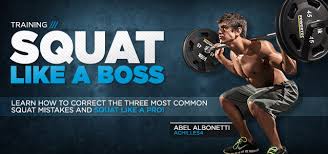I recently had the pleasure (and honor) to have my very first article posted up on BodyBuilding.com at the tail end of last week. As it happened I was contacted by one of their fitness editors asking if I’d be interested in providing some monthly content, and I of course jumped at the chance.
But only under two conditions:
1. That I’d have a fair amount of autonomy and be able to focus my writing towards universal themes such as placing a premium on strength as well as having the opportunity to teach/coach people on proper exercise technique (in addition to addressing common myths and fallacies such as squatting deep is bad for your knees or that Keanu Reeves is somehow, somewhere, considered a good actor.)
2. That they’d include a link to my blog on my bio page. Their Alexa ranking (a site which ranks websites off of traffic and popularity) is 693 in the world!
That’s a crap load of traffic!
So, in case there’s anyone new visiting the site today – welcome! Hopefully you’ll stay around awhile…;o)
Nonetheless, I submitted my article last week and it’s already up – so they must have thought it was sorta good.

So far the responses it’s been receiving has been great, and I’m really happy to see that many who have read it are on the same page as myself.
They’re obviously very smart and good looking….;o)
That said there have been numerous comments on MY comment concerning head positioning during the squat, and I’d like to take a few moments to address it.
A handful of people were a bit perplexed that I advocated to NOT look up when squatting. Apparently all their football coaches told them otherwise, and then I had to come out of no where and ruin their world…..;o)
By that same token, some felt (and misinterpreted) that what I was actually advocating was for people to look down, which is also false.
In short, as coaches and fitness professionals, we’re constantly stressing the importance of maintaining the spine’s natural curvature (a certain amount of lordosis in the lumbar spine, and kyphosis in the upper spine) while training.
In my experience coaching people to look up and to hyperextend their cervical spine isn’t a great idea in the grand scheme of things. We’re always telling people not to deadlift or squat with a rounded LOWER back (which is part of the spine last time I checked) for fear of compromising its integrity and causing injury.
Why, then, is it perfectly okay to disregard the cervical spine? Do we not want to prevent anything bad from happening in our neck?
Simply put, and as renowned strength coach and therapist Charlie Weingroff has repeatedly stated, maintaining a neutral or “packed neck/chin tucked” posture while squatting or deadlifting is a fantastic way to not only prevent injury, but it also makes you more stable, which in turn will allow you to lift more weight.
And as we all know when you lift more weight, you’re more capable to fighting off zombies when they inevitably attack. It’s standard procedure, really.
This teeny tiny deviation from the norm may throw people off guard, and it will definitely take some practice and some getting used to if you’re not accustomed to it, but in the long run it will pay huge dividends as far as overall squatting performance.
Outside of that, give the article a read and let me know what you think!





